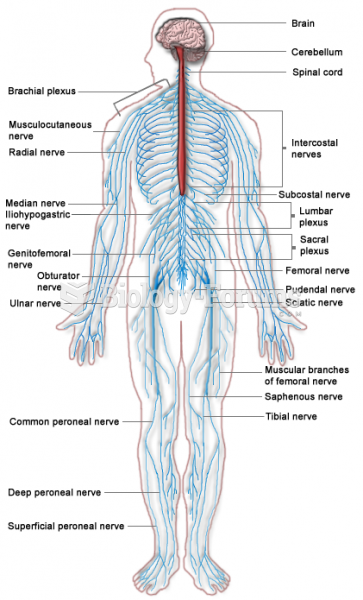|
|
|
Though Candida and Aspergillus species are the most common fungal pathogens causing invasive fungal disease in the immunocompromised, infections due to previously uncommon hyaline and dematiaceous filamentous fungi are occurring more often today. Rare fungal infections, once accurately diagnosed, may require surgical debridement, immunotherapy, and newer antifungals used singly or in combination with older antifungals, on a case-by-case basis.
Colchicine is a highly poisonous alkaloid originally extracted from a type of saffron plant that is used mainly to treat gout.
Urine turns bright yellow if larger than normal amounts of certain substances are consumed; one of these substances is asparagus.
Excessive alcohol use costs the country approximately $235 billion every year.
Vaccines prevent between 2.5 and 4 million deaths every year.







